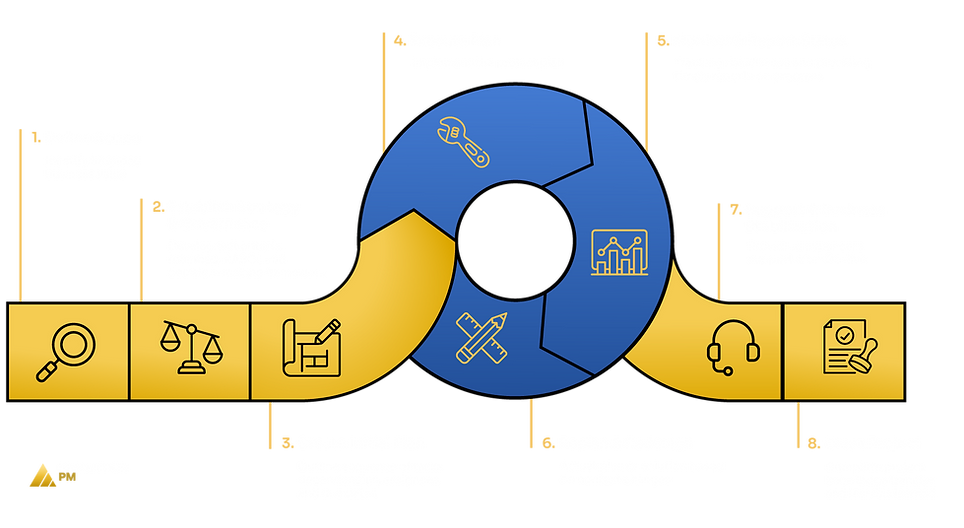The V5 Model
Unlocking Intended Business Value

At its core, an initiative’s success is not defined solely by managing constraints, but by realizing the intended business value as defined by key stakeholders.
Modern success frameworks must therefore shift their focus toward prioritizing the attainment of this intended business value as the ultimate objective.
To accomplish this, PMs must actively manage specific factors, value levers that directly influence how effectively an initiative delivers on its intended outcomes.
These levers form the foundation of the V5 Model of program and project management success, centered on harnessing intended business value.
The key levers include:
-
People
-
Resource
-
Solution
-
Governance
-
Cost
The P8 PM Lifecycle
Pragmatic Methodology Adaptive to Business Context

The P8 PM Lifecycle offers a modern, iterative, and context-aware approach that empowers leaders to capture value and drive success, even amid shifting conditions.
This pragmatic, eight-step model equips PMs to respond in real time to changing business contexts, transforming complexity into clarity and keeping outcomes aligned with evolving priorities.
The steps are:
-
Define Scope
-
Establish Strategy and Governance
-
Create Initial Plan
-
Execute Plan
-
Monitor & Report Status
-
Replan & Redesign
-
Support & Business Stabilization
-
Close Project
The P8 PM Lifecycle is grounded in core principles crafted to meet today’s complex and dynamic business realities:
-
Iterative Adaptation: Continuously refining plans and approaches as new information and changing contexts emerge. (Steps 4 through 6 form an iterative cycle, adapting to evolving business context until reaching “go-live” and business stabilization.)
-
Contextual Awareness: Maintaining real-time understanding of organizational shifts, stakeholder changes, and external influences.
-
Collaborative Governance: Establishing transparent decision-making processes that engage stakeholders, clarify roles, and enable timely escalation.
-
Value-Centric Focus: Driving outcomes that deliver measurable business value, not just task completion (aligned with the V5 Model).
-
Framework Agnostic: Seamlessly integrating with Scrum, Waterfall, or hybrid delivery methods suited to the organization and initiative.
-
Dynamic Constraint Management: Treating scope, schedule, and cost as adjustable parameters, balanced with business priorities and risks.
-
Information-Driven Influence: Building authority through accurate, timely data transparently shared with business leaders.
-
Business Stabilization Emphasis: Recognizing and planning for the critical post-implementation phase that stabilizes operations and secures long-term success.

